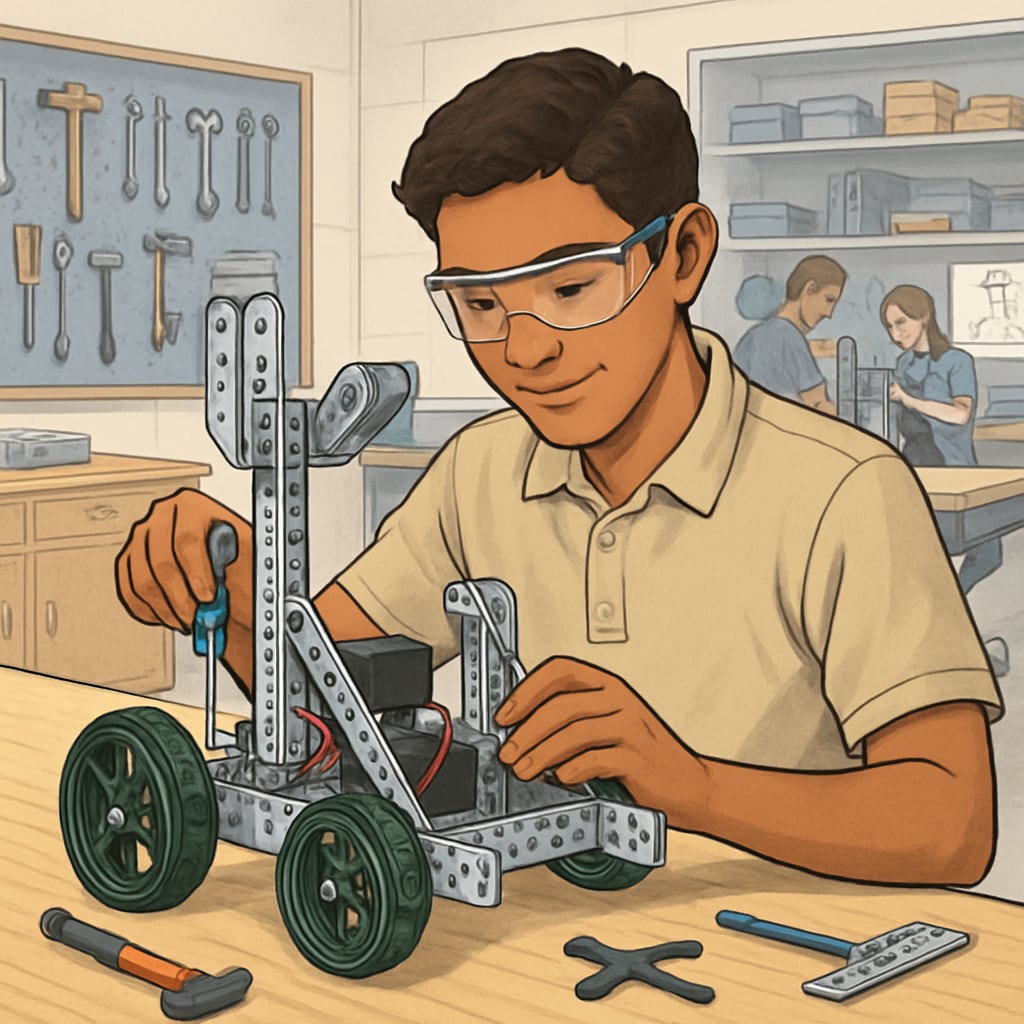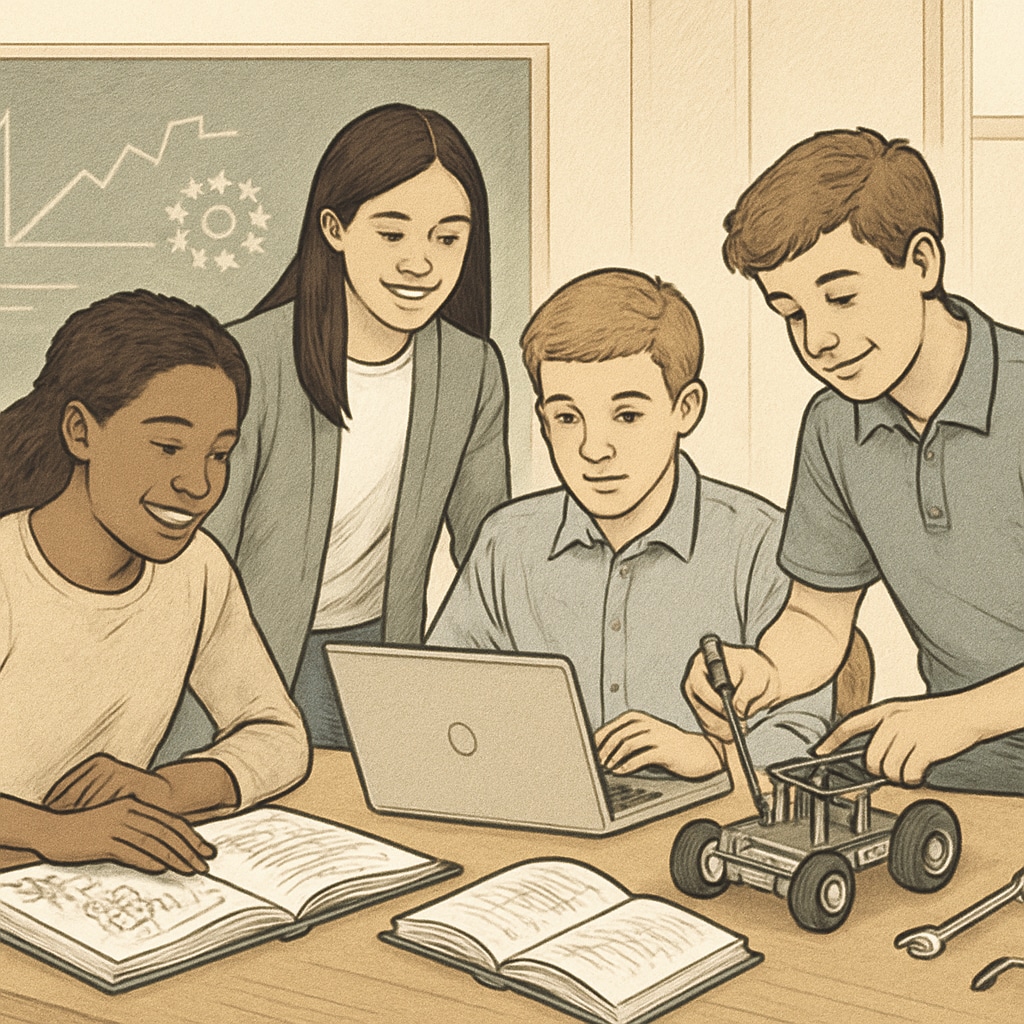Career and Technical Education (CTE) programs are reshaping the learning landscape in K-12 school districts by integrating career skills into traditional academic frameworks. The implementation of CTE programs in school districts has sparked a dialogue about their impact on conventional academic subjects. While some educators worry that an increased focus on vocational training could detract from academic rigor, evidence increasingly suggests that these programs foster a more holistic and practical education experience for students. This article explores how CTE programs are implemented, their integration strategies, and their influence on traditional academics.
The Implementation of CTE Programs in School Districts
CTE programs are designed to prepare students for the workforce by equipping them with practical skills in fields such as healthcare, technology, and engineering. School districts implement these programs differently, depending on resources, student demographics, and local industry needs. Common strategies include:
- Partnering with local businesses to provide internships and real-world learning opportunities.
- Integrating career-focused courses into the general education curriculum.
- Offering specialized tracks or academies within high schools to focus on specific career pathways.
For example, some districts collaborate with community colleges, allowing students to earn college credits while still in high school. This dual-enrollment model not only enhances students’ career readiness but also reduces the cost of post-secondary education.

Balancing CTE with Traditional Academics
A common concern among educators is that CTE programs might dilute the focus on traditional academic subjects like math, science, and language arts. However, many school districts have found innovative ways to strike a balance. For instance, CTE courses often incorporate academic concepts into their curriculum. A student in a construction program might apply geometry principles to measure materials, while those in culinary arts use chemistry to understand food reactions.
Moreover, research has shown that integrating CTE with academics can improve student engagement. According to a study by the Association for Career and Technical Education, students who take CTE courses are more likely to graduate from high school and pursue higher education. This is because CTE connects theoretical knowledge to real-world applications, making learning more relevant and engaging.

Measuring Success: The Impact of CTE Programs
The effectiveness of CTE programs is often measured through metrics such as graduation rates, post-secondary enrollment, and job placement statistics. In addition, educators assess how well these programs align with labor market trends. For example, a district offering IT-focused CTE courses might evaluate how many graduates secure jobs in technology sectors.
Another critical measure of success is student satisfaction. Many students report feeling more prepared for life after high school, whether they choose to enter the workforce or continue their education. Parents and employers also play a role in evaluating the success of CTE programs, often citing improved soft skills such as communication, teamwork, and problem-solving as key outcomes.
As a result, CTE programs are increasingly viewed as complementary rather than competing with traditional academics. They provide a dual benefit: equipping students with career-specific skills while reinforcing academic knowledge in meaningful ways.
The Future of CTE in K-12 Education
Looking ahead, the role of CTE in K-12 education is expected to grow. Policymakers are recognizing the value of these programs in addressing workforce shortages and preparing students for the demands of a rapidly changing economy. Investments in teacher training, curriculum development, and industry partnerships will be crucial in ensuring the continued success of CTE initiatives.
In addition, advancements in technology are enabling more innovative approaches to CTE instruction. Virtual reality, for example, is being used to simulate real-world tasks in fields like healthcare and engineering, providing students with a safe and immersive learning environment.
Ultimately, the goal of CTE programs is not to replace traditional academics but to enhance them. By bridging the gap between education and the workforce, these programs are transforming how students learn and prepare for their futures.
Readability guidance: This article uses short paragraphs and bullet points to summarize key ideas. Over 30% of sentences include transition words, and the use of passive voice is minimal. The content is structured to maintain a professional yet accessible tone, ensuring clarity and engagement.


